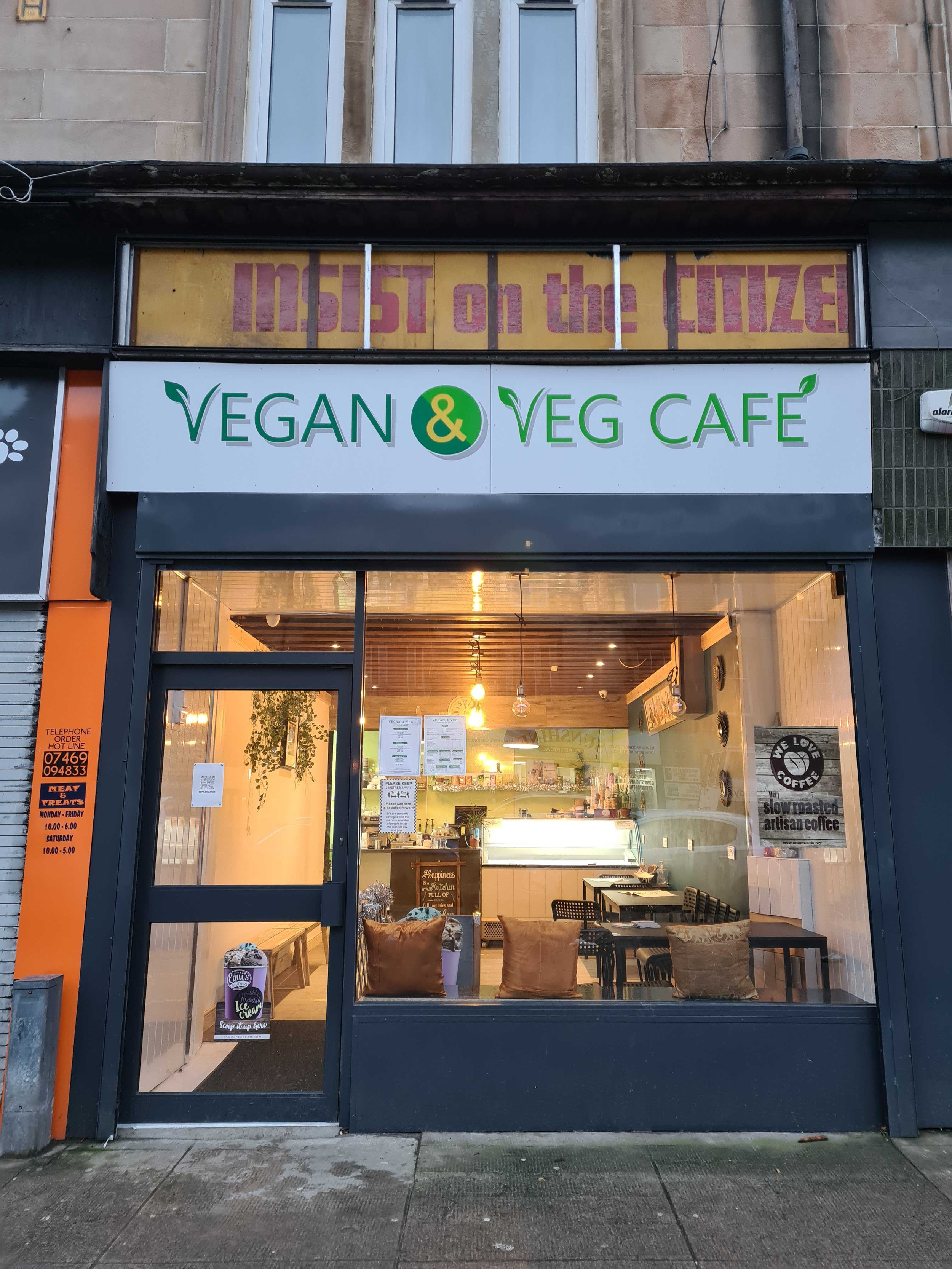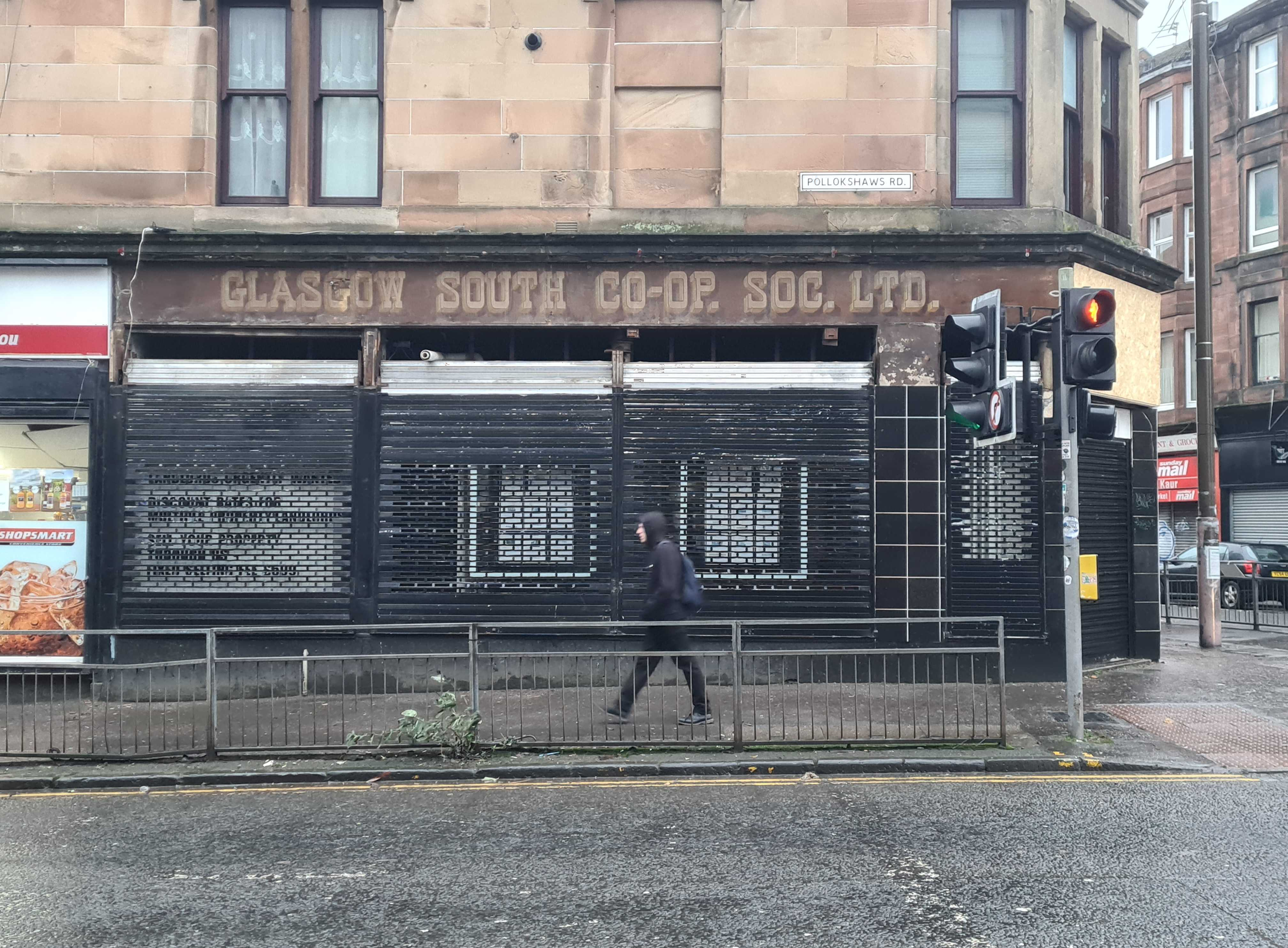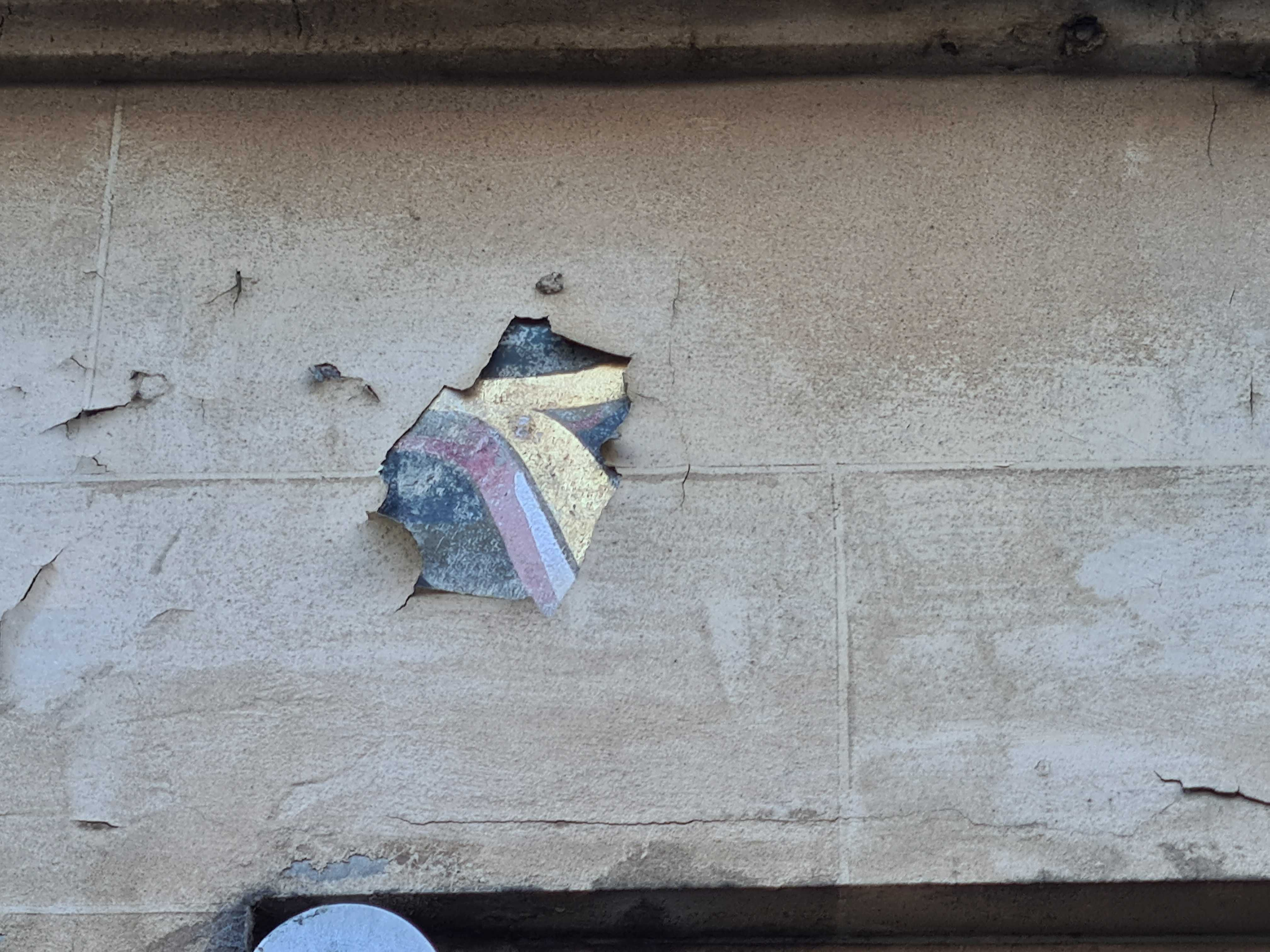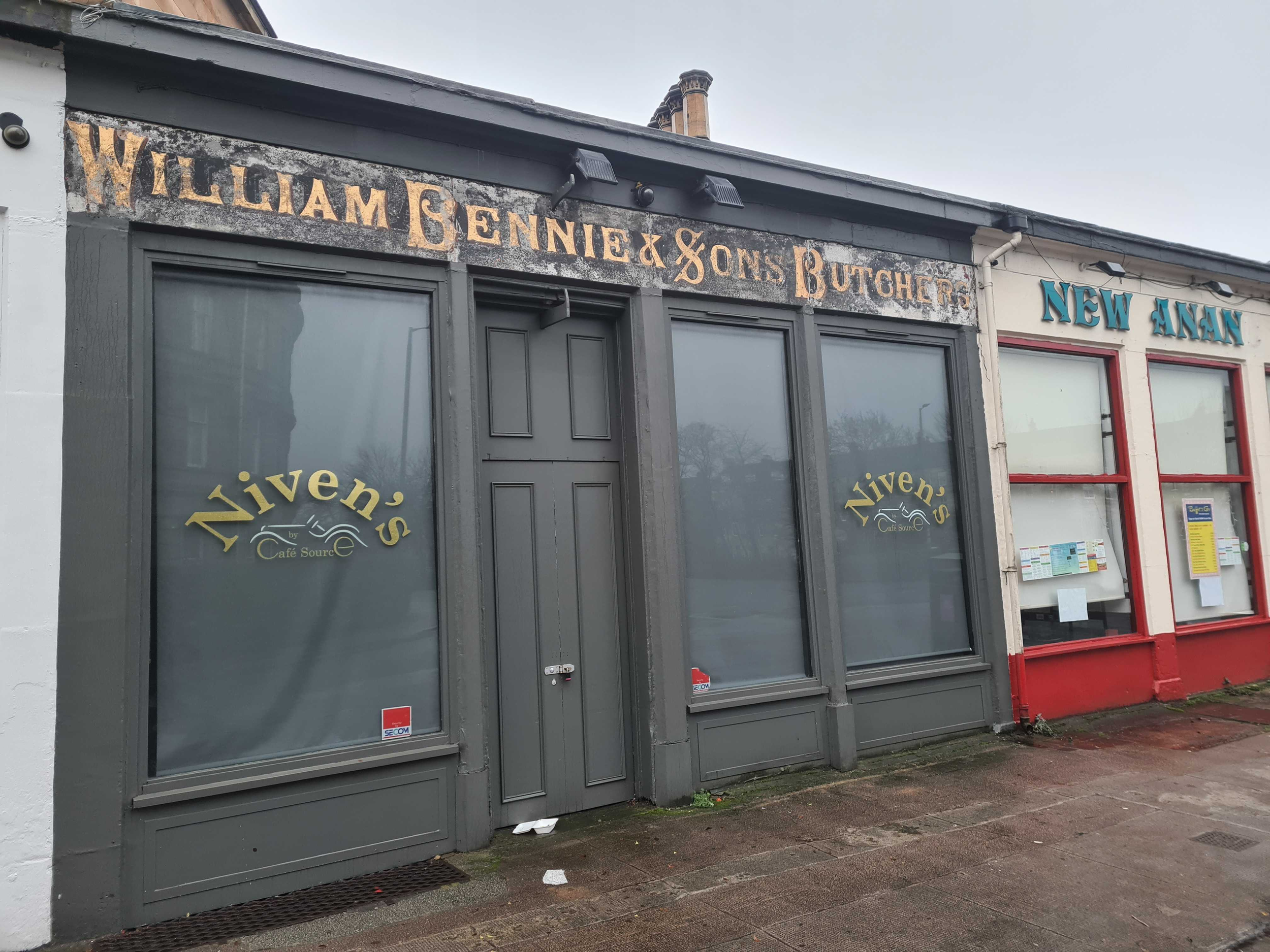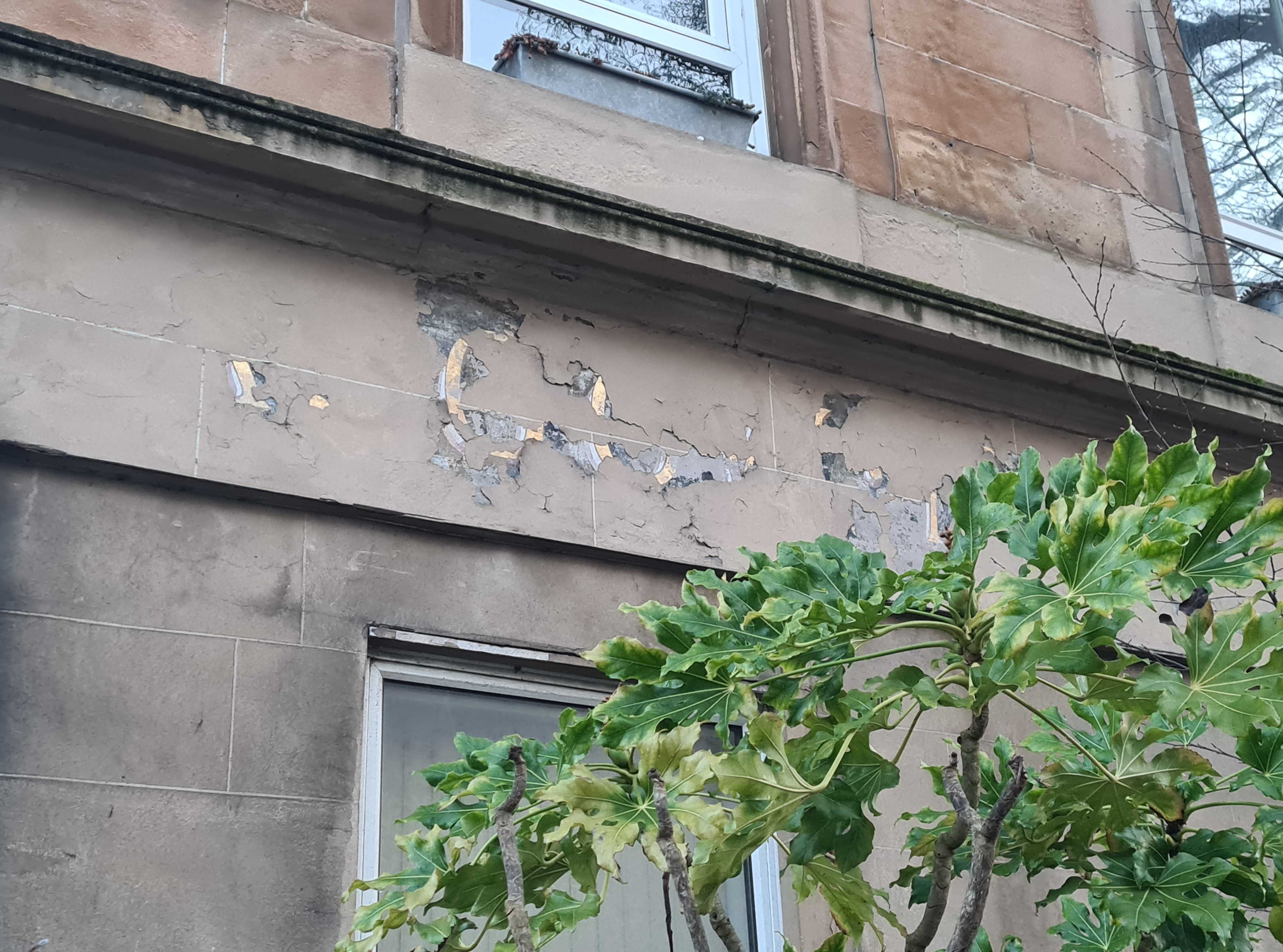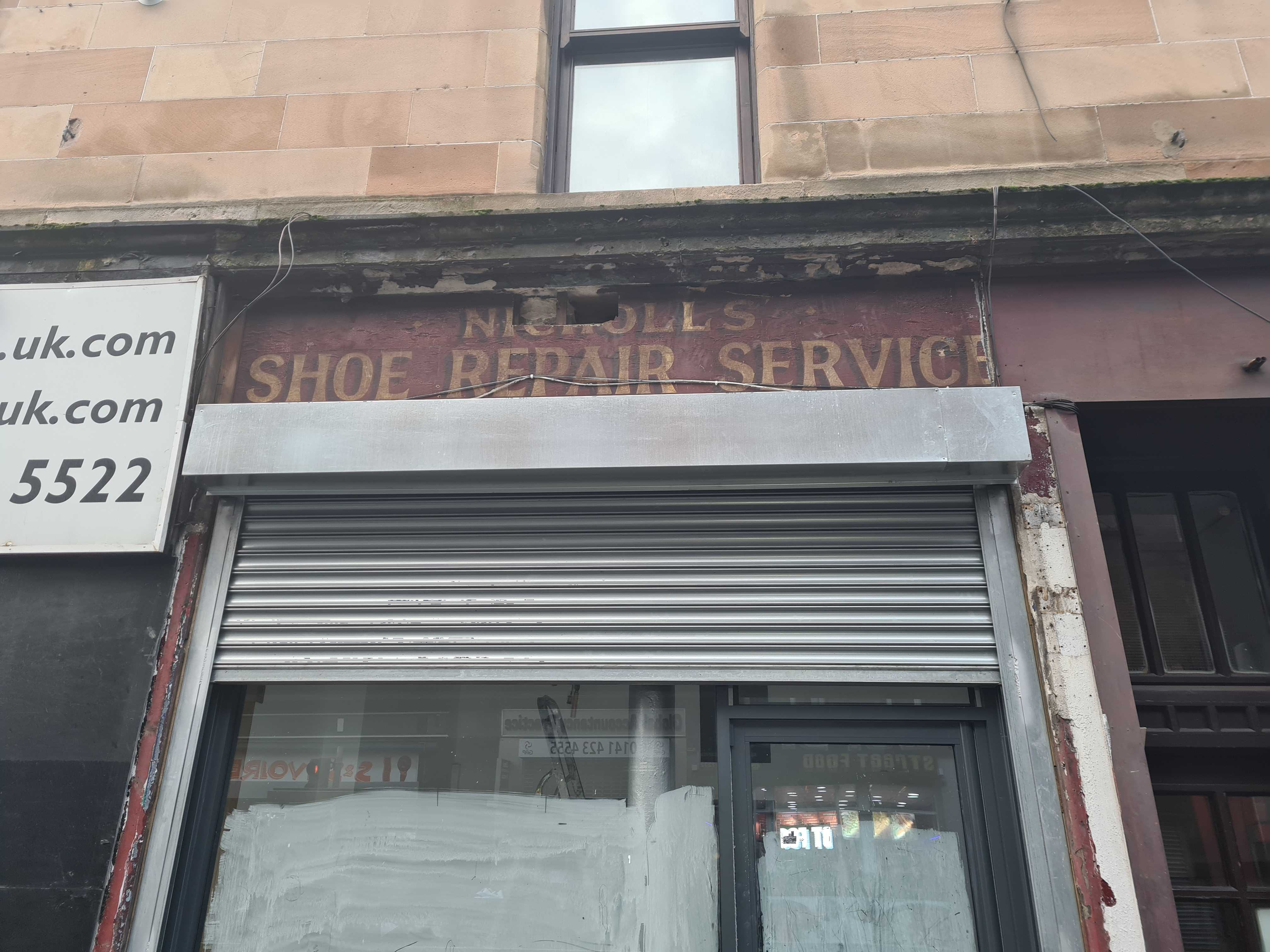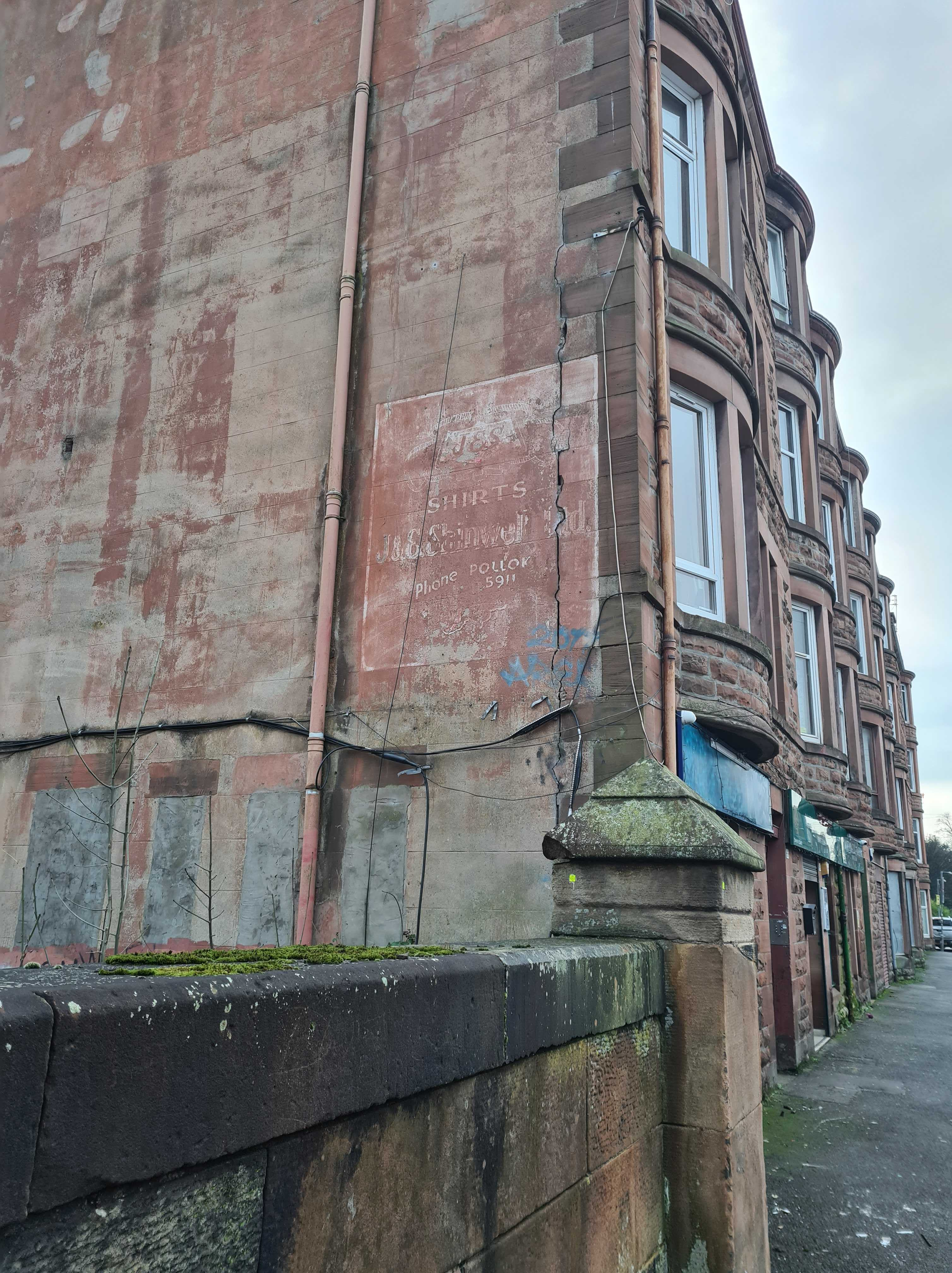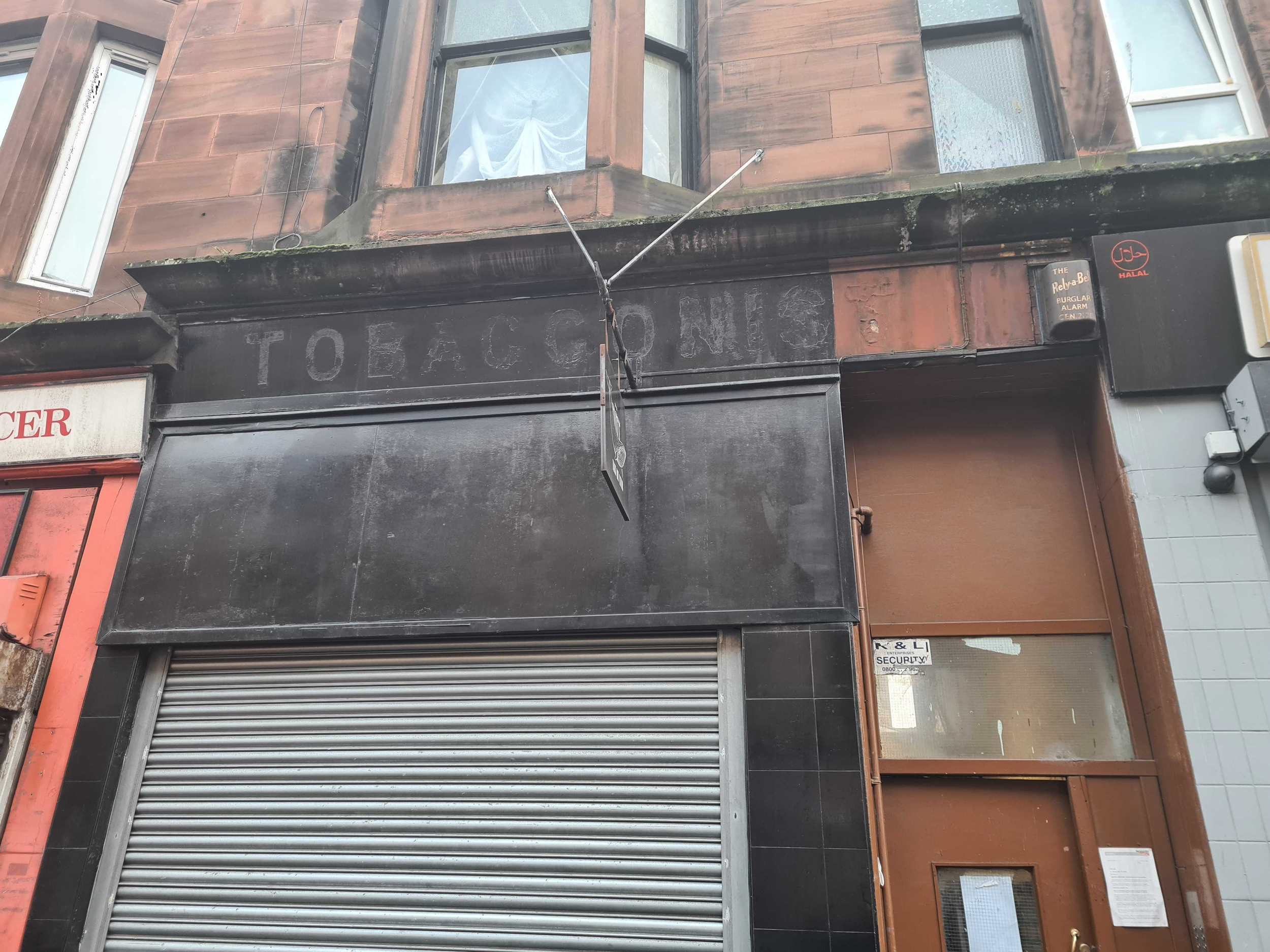Ghost Signs around Govanhill
In the ever-changing shopping streets of Govanhill, ‘ghost signs’ are uncovered on a regular basis. Some are hurriedly recovered, others left on show as mementos of the past. In this article for Issue 2, Kenneth McElroy goes hunting for some local treasures and explores our attraction to them.
Words & Photos by Kenneth McElroy
Govanhill is a treasure chest. An exciting and eclectic combination of the traditional and the new in a diverse, fast-moving, yet historic neighbourhood. It has been a culturally vibrant and bustling area for hundreds of years, with successive waves of peoples and cultures calling Govanhill their home: Highlanders (like myself) and Lowlanders, Polish and Pakistanis, Italians and Irish have all set up shop here.
Indeed, shops and trade are at the heart of the tenement story, and there has always been a strong retail presence in the area. And if you look closely, you can find traces of some of the businesses that once sold their wares in the area – namely, in the form of ‘ghost signs’.
You may already be aware of what a ‘ghost sign’ is; signs from the past – sometimes over a century old. They can range in style, age, type and size. From a small painted house number, to the name of a shop on a shopfront, to an advertisement adorning the side of an entire tenement. They even include carved signs, such as the Camphill Tenement buildings.
I’m a purist – or perhaps an anorak – and prefer the painted signs, but glasswork and mosaics found at the entrance to buildings can be included, too. There’s a fantastic range of historic signs and designs to discover.
“This discovery was undone only a few months later when it was daubed over, with a depressing grey paint… a travesty”
I’ve enjoyed a bit of ghost sign spotting (also known as ghost sign busting) ever since one in Thurso, my hometown, was ‘discovered’, a few years ago. The workmen removed the sign that had been covering it, in preparation for a new business, and ‘Bruces Grocer & Tobacconist’ was once more revealed after some 50 years. This discovery was undone only a few months later when it was daubed over, with a depressing grey paint, and replaced with a cheap, drooping plastic banner. A travesty.
Nowadays, however, there seems to be a predilection amongst businesses for retaining these signs. At the Vegan and Veg café on Victoria Road, Sandeep and Billi Singh uncovered a sign proclaiming ‘Insist on the Citizen’ (a reference to the Glasgow Evening Citizen, published between 1864 and 1974) as they prepared to open up their new health food café. Sandeep has owned the premises for some 30 years but was surprised to see the sign when workmen revealed it. He plans to keep it there for at least a little longer. After all, it has even attracted a few visitors to the café.
But why might these signs have developed such an allure? There have been attempts at an academic level to understand just why we value ghost signs. Research has shown that the fascination with yesteryear seems to have gone in hand-in-hand with gentrification and that the urban ephemera of the working classes has become especially fetishised.
This ‘valorisation’ is exemplified, for example, in the baring of brick walls, or the inclusion of Singer sewing machines as ornamentation, or wooden shopfronts, or even the return of the now seemingly ubiquitous shopkeeper’s apron. Is this part of genuine affection for the past? Or just quirky added attraction to lure in potential shoppers?
“there seems to be a constant commandeering and re-use of the past”
The general appeal and pull of the past should not be overlooked. Perhaps we ought not to delve too deeply or too navel-gazingly into why we like things that are old. We just do. And it shapes our beliefs, our thoughts, our tastes, our styles – there seems to be a constant commandeering and re-use of the past. A quick wander down Victoria Road and you might think you’ve been transported back to the 1990s. Bleached blonde hair, platform shoes, chains and garish ski jackets are all back in style!
This re-use even extends to old signs. There has been a recent upsurge in hand-painted signs, in particular the eye-catching ‘two-tone’ design that provides a kind of shadow effect – a style that owes a fair amount to signs of the past.
Rachel Millar at work. Photo Credit: Dickies Workwear'
Rachel Millar is a traditional signwriter who has been creating such signs since 2015, after graduating from Edinburgh College of Art and the Massachusetts College of Art. She explains that there has been huge resurgence in traditional signwriting over the last ten years, which can be attributed to a return to more traditional forms of ‘making’: “This is due to the increased interest in craft and makers, helped along by the popularity of craft beer, pottery and other slow processes, which reject the overwhelming online world.”
We might also feel some sort of fondness for ghost signs, given that they require a steady hand and skilful approach in their creation. It is hard to argue that the plastic, digitally designed signs are an improvement on the hand-painted signs. That’s all subjective, of course, but one cannot underestimate the appreciation of an accomplished artisan.
This is something Rachel also acknowledges: “Business owners have realised that cheap vinyl just doesn’t last. If you pay for something to be painted, it will stand the test of time...and our glorious Scottish weather!”
You may already be familiar with the Instagrammable Kelvingrove Café sign in the West End, or perhaps you’ll have seen the huge ‘J.D. Galloway’ sign near Glasgow Cathedral, but Govanhill and the South Side can also lay claim to their fair share of ghost signs.
Have you spotted the attractive Seafresh Shop sign above a tattooist on Skirving Street in Shawlands? At Niven’s cafe on Nithsdale Road, there’s a gorgeous and golden ‘William Bennie and Sons Butchers’ at the back, with ‘Motor Engineer’ at the front. A pair of early 20th century designs can be found opposite one another on Allison Street: ‘Nicholls Shoe Repair’ and an unnamed tobacconist, again above another tattooist.
“It is this transience that makes ghost sign busting a real pleasure, and even a little addictive”
More signs are revealed and recovered regularly. As I write this, a new one has just been revealed at the corner of Allison Street and Pollokshaws Road. An unsightly black board was peeled off to reveal a startling orange and brown hand-painted, block-font sign belonging to the former premises of the ‘Glasgow South Co-Op Society LTD’. The design, which is certainly pre-1950s, will soon be covered again by plywood sheets, disappearing as fast as it was uncovered. It is this transience that makes ghost sign busting a real pleasure, and even a little addictive.
What lies in the future for ghost signs? A cursory glance at social media (and the #ghostsign hashtag) reveals that thousands more enjoy a bit of ghost sign spotting. Glasgow City Heritage recognised this when they created the ‘Ghost Signs of Glasgow’ project, which provides information and background on some of the signs that can be found within the city and is well worth checking out.
The beautiful hand-painted remnants of forgotten proprietors feature on faded shopfronts: two-tone descriptions of long-gone wares and goods, hoisted by flourishes of the English language that are rarely uttered in today’s vernacular. Their mementos of the past are alluring, transient, nostalgic, precious and peculiar. These hidden and not-so-hidden features provide an evocative glimpse of Govanhill’s past and, while their fronts may have faded, our shared passion for ghost signs remains as strong as ever.
